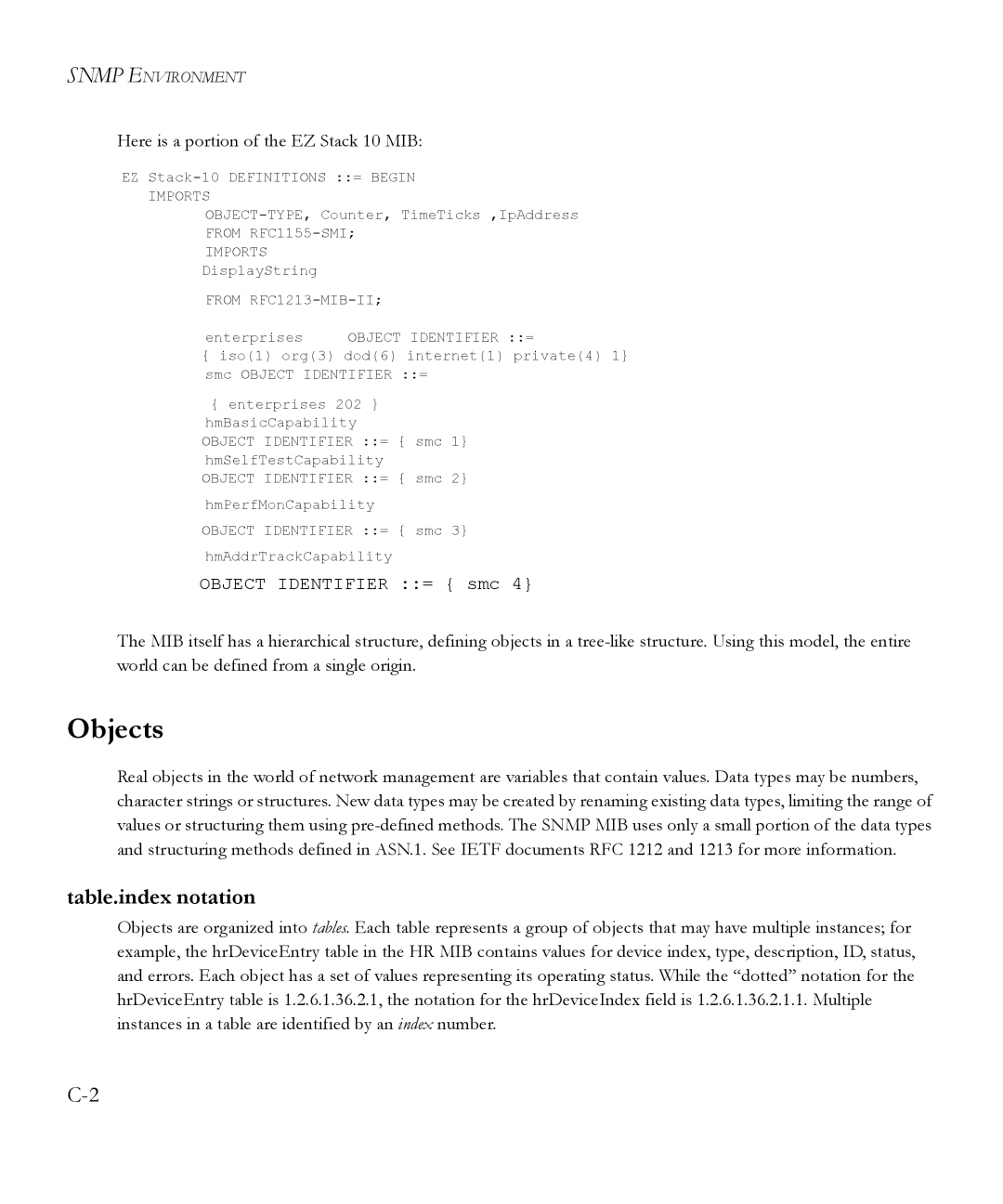SNMP ENVIRONMENT
Here is a portion of the EZ Stack 10 MIB:
EZ
IMPORTS
FROM
IMPORTS
DisplayString
FROM RFC1213-MIB-II;
enterprises | OBJECT IDENTIFIER ::= |
{iso(1) org(3) dod(6) internet(1) private(4) 1} smc OBJECT IDENTIFIER ::=
{enterprises 202 } hmBasicCapability
OBJECT IDENTIFIER ::= { smc 1} hmSelfTestCapability
OBJECT IDENTIFIER ::= { smc 2}
hmPerfMonCapability
OBJECT IDENTIFIER ::= { smc 3}
hmAddrTrackCapability
OBJECT IDENTIFIER ::= { smc 4}
The MIB itself has a hierarchical structure, defining objects in a
Objects
Real objects in the world of network management are variables that contain values. Data types may be numbers, character strings or structures. New data types may be created by renaming existing data types, limiting the range of values or structuring them using
table.index notation
Objects are organized into tables. Each table represents a group of objects that may have multiple instances; for example, the hrDeviceEntry table in the HR MIB contains values for device index, type, description, ID, status, and errors. Each object has a set of values representing its operating status. While the “dotted” notation for the hrDeviceEntry table is 1.2.6.1.36.2.1, the notation for the hrDeviceIndex field is 1.2.6.1.36.2.1.1. Multiple instances in a table are identified by an index number.
